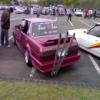M35 Turbo Upgrade.
Announcements
-
Similar Content
-
Latest Posts
-
By Dose Pipe Sutututu · Posted
Wow... What in the fk, it's a dead head system... -
By Julsmadrid · Posted
Yeah I initially reached out to them and they have been super helpful but they don’t have these rings in stock and they are the ones who told me they need to be made to suit. -
I went and found the actual FSM again (Yeah, I squirreled...) Screen grab of the FSM for M35. 51PSi with engine idling.






Recommended Posts
Create an account or sign in to comment
You need to be a member in order to leave a comment
Create an account
Sign up for a new account in our community. It's easy!
Register a new accountSign in
Already have an account? Sign in here.
Sign In Now